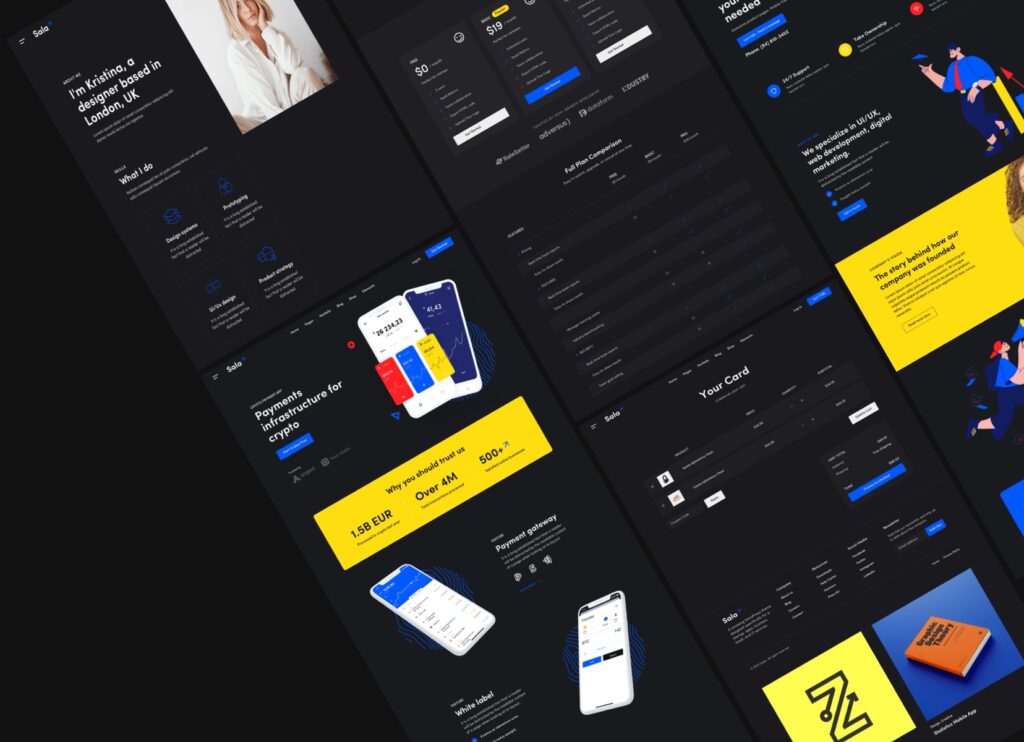It seems like we should dicuss the evolution of web design, from the role of design agencies to the future trends in the field. Let’s explore both aspects in more detail:
Design Agencies and Their Role: Design agencies have traditionally played a crucial role in creating visually appealing and functional websites for businesses and individuals. These agencies employ skilled designers, developers, and other experts to provide comprehensive web design services. Their services often include:
-
Customized Design: Design agencies work closely with clients to create unique and tailored website designs that reflect the brand’s identity and objectives.
-
Responsive Design: They ensure that websites are responsive and optimized for various devices, including desktops, tablets, and mobile phones.
-
User Experience (UX) Design: Design agencies focus on creating intuitive and user-friendly interfaces to enhance the overall user experience.

-
Visual Elements: They handle the selection of typography, color schemes, imagery, and other visual elements that contribute to the website’s aesthetics.
-
Development and Integration: Many design agencies also offer development services to bring their design concepts to life using coding languages and technologies.
-
Maintenance and Updates: Some agencies provide ongoing support, maintenance, and updates to keep websites current and functional.

The Future of Web Design: The field of web design is constantly evolving due to advancements in technology, changes in user behavior, and shifting design trends. Here are some trends and directions that may shape the future of web design:
-
User-Centric Design: As technology becomes more integrated into our lives, web design will continue to focus on creating personalized and user-centric experiences. This involves understanding user preferences and tailoring designs to meet their needs.
-
Mobile-First and Responsive Design: With the increasing use of mobile devices, web designers are prioritizing mobile-first design approaches. Responsive design will remain essential to ensure optimal user experiences across all screen sizes.
-
Minimalism and Micro-Interactions: Minimalistic design aesthetics, coupled with subtle micro-interactions, will continue to be popular. These interactions enhance user engagement without overwhelming the user.
-
AR and VR Integration: As augmented reality (AR) and virtual reality (VR) technologies become more accessible, web designers may incorporate these elements to create immersive and interactive experiences.

-
Voice User Interfaces (VUI): With the rise of voice-activated devices and virtual assistants, designers will need to consider VUI in their designs to accommodate voice search and commands.
-
AI-Driven Design: Artificial intelligence (AI) can analyze user behavior and preferences to optimize design elements, layout, and content presentation for improved engagement.
-
Accessibility and Inclusivity: Designing with accessibility in mind, including features for people with disabilities, will become even more crucial to ensure equal access to web content.
-
Dynamic and Data-Driven Content: Websites will increasingly use data-driven content that adapts in real-time based on user interactions and preferences.
-
Codeless and No-Code Platforms: These platforms allow individuals with minimal technical expertise to design and build websites using drag-and-drop interfaces, making web design more accessible to a wider audience.
-
Sustainability and Performance: Web designers will focus on creating energy-efficient websites with faster loading times to enhance user experience and reduce the carbon footprint of online activities.
In conclusion, design agencies have played a significant role in shaping the current landscape of web design, but the field is constantly evolving with new technologies and trends. The future of web design is likely to revolve around user-centric experiences, emerging technologies, and a continued emphasis on aesthetics, functionality, and accessibility.





